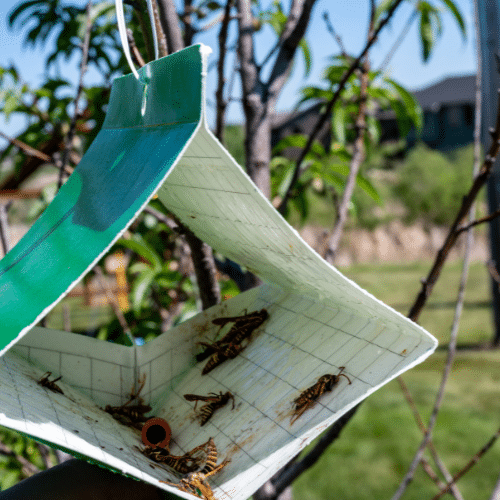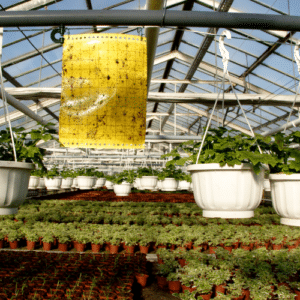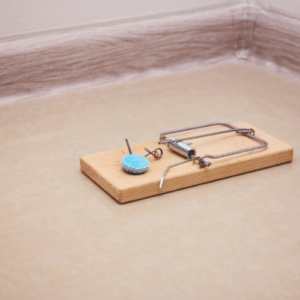
17 Sep Pheromone Traps Explained
How Pheromone Traps Work
Pheromone traps are becoming increasingly popular in the world of pest control, and for good reason. These innovative devices leverage the natural communication methods of pests to effectively manage infestations. Understanding how pheromone traps work can help homeowners and business owners in South Florida maintain a pest-free environment. At Pest Busterzz, we believe in the importance of exploring effective and eco-friendly solutions like pheromone traps.
Pheromone traps are specialized devices designed to attract and capture specific pests using chemical signals known as pheromones. Pheromones are substances that insects release into the environment to communicate with others of their species. These chemical signals can convey a variety of messages, such as mating readiness or the presence of food sources.
Pheromone traps come in various forms, including lure traps and sticky traps. Lure traps contain a pheromone lure that draws in target pests, while sticky traps use adhesive surfaces to capture them once they approach. These traps are particularly effective for managing pests like moths, beetles, and certain flying insects that rely heavily on pheromones for navigation and communication.
Luring Pests with Science
The science behind pheromone traps lies in their ability to mimic natural scents that pests are drawn to. Each species of pest has its own unique pheromone signature, which they use to attract mates or signal danger. By using synthetic versions of these pheromones, traps can effectively lure pests into their vicinity.
For example, male moths are attracted to female moth pheromones during the mating season. A pheromone trap mimics these scents, leading male moths directly to the trap. Once there, they either get caught on the sticky surface or become trapped in the device, significantly reducing the population. This targeted approach means that you can manage pest populations without harming beneficial insects or using harsh chemicals.
The mechanics of pheromone traps are relatively simple but highly effective. Most traps consist of a bait component and a capturing mechanism. The bait, which is often a pheromone lure, releases a scent that attracts the target pests. The capturing mechanism varies depending on the type of trap; it can be an adhesive surface, a container with a one-way entry, or even a light trap.
Using these traps requires careful consideration of their placement. To maximize effectiveness, place pheromone traps near areas where you’ve seen pest activity or where they are likely to enter your home or business. Regular monitoring and replacement of the traps are also essential to ensure they continue to attract pests effectively.
Best Times for Pheromone Traps
Knowing when to use pheromone traps starts with identifying the specific pests you’re dealing with. Pheromone traps are particularly effective for common pests such as moths, beetles, and some types of flies. For example, clothing moths are a significant concern for homeowners, especially in humid climates like South Florida. Using pheromone traps specifically designed for moths can help monitor and control their populations effectively.
Timing is crucial when using these traps. Deploy them during peak mating seasons for the target pests to ensure maximum attraction. Many pests have specific life cycles that make them more susceptible to traps at certain times of the year. For instance, spring and early summer are prime times for many moth species.
In South Florida, the warm climate allows for a longer pest season. This means that homeowners and business owners should remain vigilant throughout the year. Pheromone traps can be deployed before peak pest seasons to catch early invaders. Using them proactively can help manage pest populations before they become a significant issue.
In addition to seasonal considerations, keep an eye on environmental factors such as humidity and temperature, which can influence pest activity. Regularly checking your traps during warmer months can help you stay ahead of potential infestations.
Targeted Pest Control Solutions
One of the biggest advantages of pheromone traps is their eco-friendly nature. These traps are designed to attract specific pests without the use of harmful chemicals. This is particularly important for homeowners and businesses that prioritize sustainable practices. Pheromone traps provide an effective alternative to traditional pesticides, reducing the risk of harming beneficial insects and other wildlife.
Using pheromone traps also minimizes the amount of toxic chemicals released into the environment. In South Florida, where the ecosystem is delicate, this is an important consideration. By opting for pheromone traps, you can maintain a healthy balance in your garden or landscape while effectively managing pest issues.
Another significant benefit of pheromone traps is their targeted approach to pest control. Because they are designed to attract specific species, you can significantly reduce pest populations without affecting non-target insects. This is crucial for protecting beneficial insects that contribute to a healthy ecosystem.
For example, using pheromone traps for moths can help keep their populations in check without impacting pollinators like bees or butterflies. This targeted method makes pheromone traps an invaluable tool in integrated pest management strategies, which aim to reduce reliance on chemical pesticides.
Enhancing Pest Control Efforts
Pheromone traps are effective tools in pest management, but they do have limitations. They should not be seen as a standalone solution for severe infestations, as they may not suffice if pests have already established large populations. Instead, using these traps as part of a comprehensive pest management strategy is essential. This strategy can include sealing entry points, conducting regular inspections, and employing other pest control methods. Additionally, pheromone traps may not attract every species of pest, so it’s vital to identify the specific pests in your area and choose traps accordingly.
Consulting with pest control professionals before deploying pheromone traps can provide valuable insights. Experts can assess your situation, identify potential pest issues, and recommend the best traps and strategies. Proper placement and timing are crucial for maximizing the effectiveness of these traps, and professionals can help ensure they function as intended. Regular follow-up inspections are necessary to monitor trap performance and make adjustments when needed.
Incorporating regular inspections and maintenance into your pest management routine is key. After deploying pheromone traps, monitor them frequently for pest activity and replace them as necessary to maintain their effectiveness. Additionally, conducting routine inspections of your home or business will help catch early signs of pest activity, preventing small problems from becoming major infestations.
Choosing pest-resistant materials for your property can further enhance your pest management efforts. Options like treated wood or non-porous surfaces can deter pests from taking residence in your space. Discussing these materials with your contractor can provide additional layers of protection and contribute to a healthier, pest-free environment.
Conclusion
Understanding the science behind pheromone traps is essential for effective pest control. These innovative tools not only provide a targeted approach but also offer eco-friendly solutions that benefit both homeowners and the environment. By knowing how and when to use pheromone traps, you can keep your home or business safe from unwanted pests.
As you prepare for pest management, remember that regular inspections and proactive measures are crucial. Combining pheromone traps with other pest control methods will ensure that you maintain a healthy, pest-free environment. With the right strategies and support from pest control professionals, you can confidently enjoy your space without the worry of pests invading your home.






No Comments